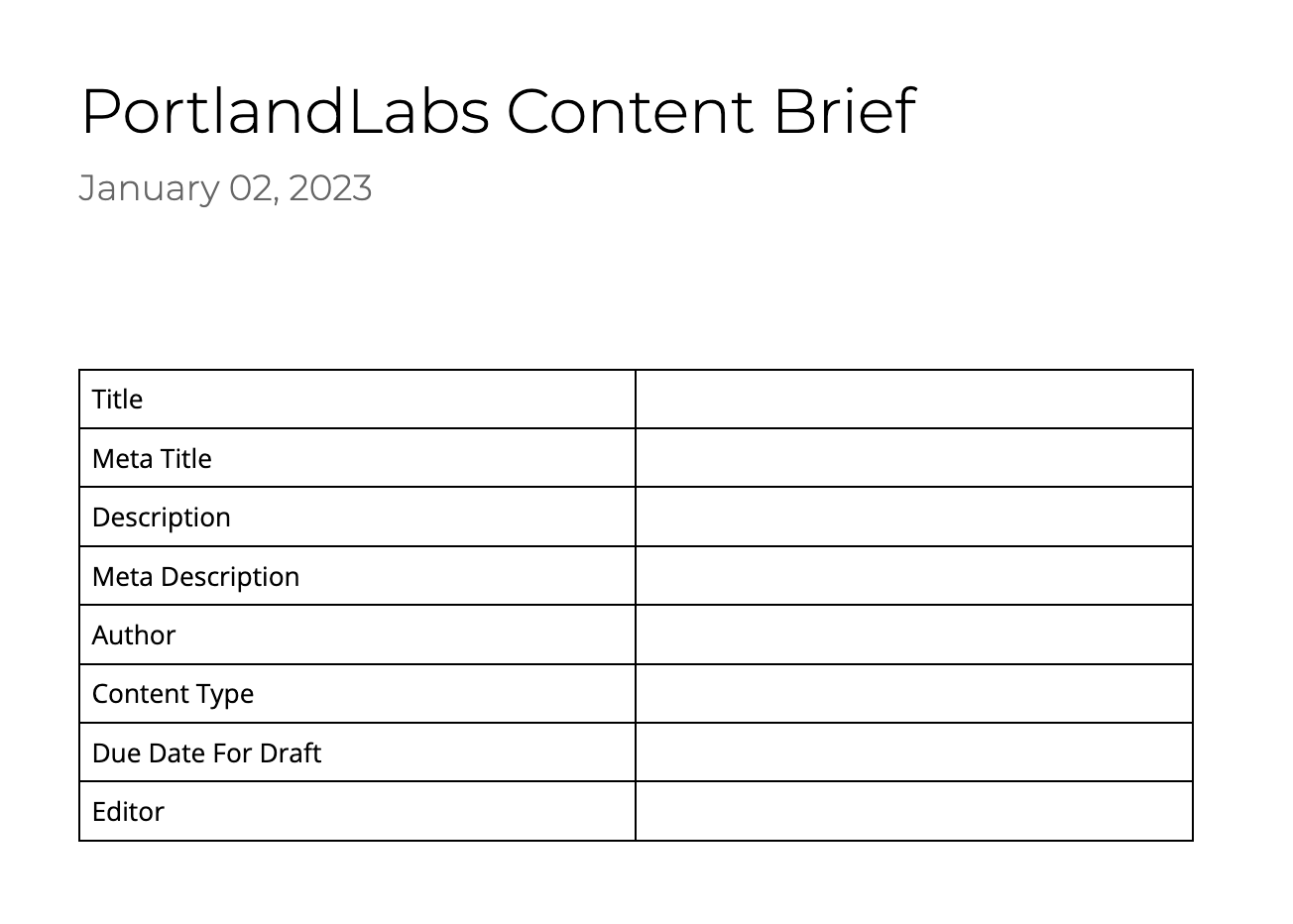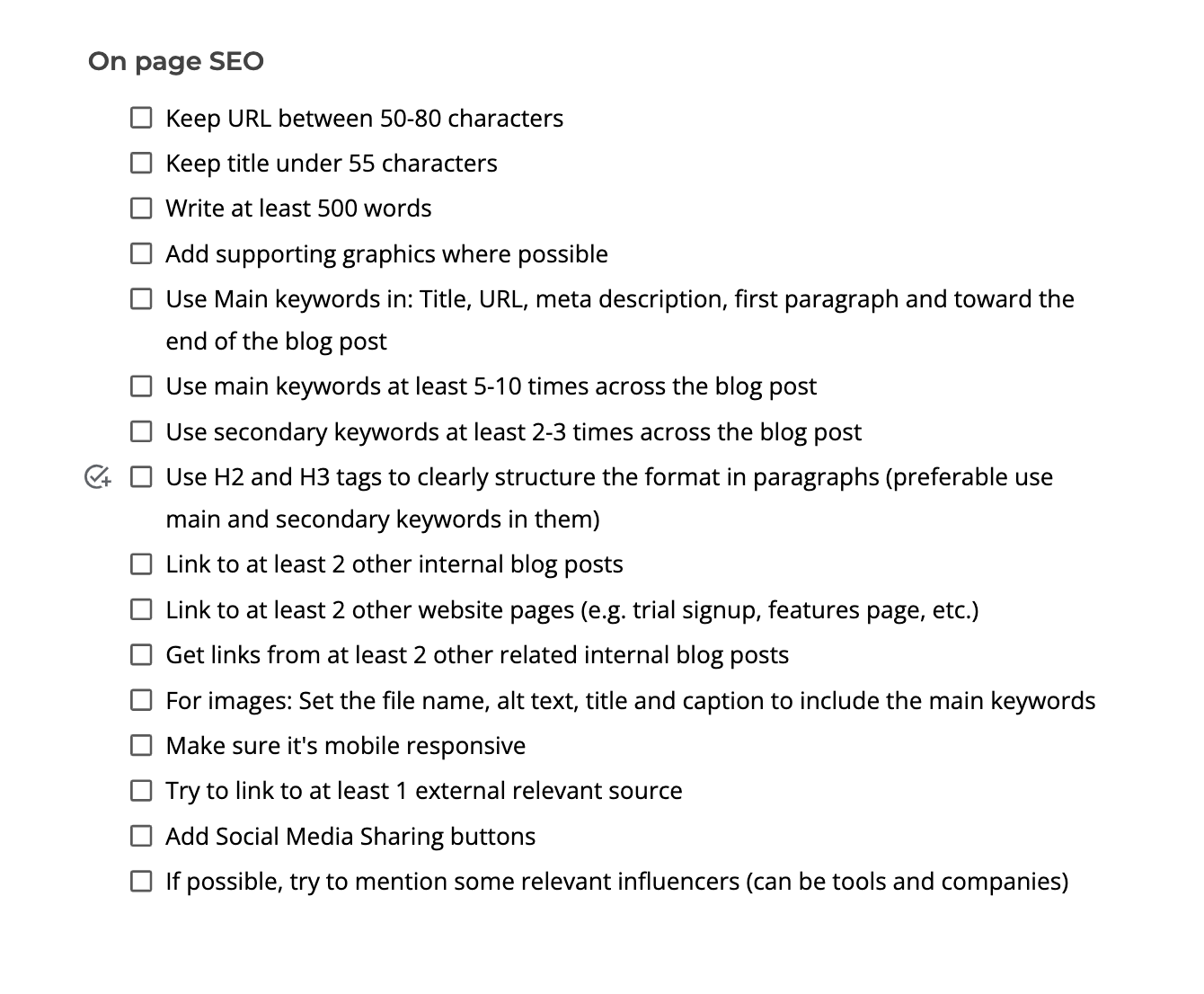To start the new year off on the right foot, it's important to evaluate the state of your website's content and SEO. Utilizing a checklist can ensure that your blog posts are current, accurate, and optimized for search engines. In this post, you will gain an understanding of what a content brief is and what goes into the brief used at PortlandLabs.
What Is A Content Brief
A content brief is a document that outlines the purpose, target audience, and key points of a piece of content. It is typically used as a guide for content creators, such as writers, designers, or video producers, to ensure that they are creating content that meets the goals and needs of the organization.
The content briefing may include information about the content's tone, style, and format, as well as any specific requirements or constraints that the content must meet. It may also outline the intended distribution channels for the content, such as social media, email, or a website.
Overall, the content briefing is an important tool for ensuring that all stakeholders are on the same page and that the content creation aligns with the larger goals and strategy of the organization.
The first part of PortlandLabs content brief is in the same order as Composer for easy copy and paste.
- Title (Page Name)
- Meta Title
- Description
- Meta Description
- Author
- Content Type
- Due Date For Draft
- Editor
Figure 1. Example Content Brief

The second part of PortlandLabs Content Brief is the seo checklist.
SEO checklist for your content brief:
Keep the URL of the blog post between 50-80 characters. Short URLs make it easier for users to remember and share the link.
Keep the title of the blog post under 55 characters. The title is typically displayed in search results, and Google generally only displays the first 55 characters.
Write at least 500 words of content. Longer content tends to rank better in search results because it indicates to search engines that the content is comprehensive and covers the topic in detail.
Add supporting graphics where possible. Visuals can help break up the text and make the content more engaging for readers.
Use main keywords in the title, URL, meta description, and blog post's first and last paragraphs. This helps search engines understand the content and can improve the post's ranking in search results.
Use main keywords at least 5 times across the blog post. This helps search engines understand the relevance of the content to the main keywords.
Use secondary keywords at least 2-3 times across the blog post. This helps search engines understand the relevance of the content to related keywords.
Use H2 and H3 tags to clearly structure the format of the blog post into paragraphs. Preferably, use main and secondary keywords in these tags. This helps search engines understand the structure of the content and can improve the ranking of the post in search results.
Link to at least two other internal blog posts. Linking helps search engines understand the relationship between different pieces of content on your website and can improve the ranking of the linked pages.
Link to at least two other website pages, such as a trial signup page or a features page. Internal linking helps search engines understand the relationship between different pages on your website and can improve the ranking of the linked pages.
Get links from at least two other related internal blog posts. More internal linking helps search engines understand the relationship between different pieces of content on your website and can improve the ranking of the linked pages.
For images, set the file name, alt text, title, and caption to include the main keywords. This helps search engines understand the relevance of the images to the content and can improve the ranking of the post in search results.
Make sure the blog post is mobile responsive. Mobile is important because more and more people are accessing the internet on their phones, and a mobile-responsive website provides a better user experience.
Try to link to at least one external relevant source. This helps search engines understand the credibility of the content and can improve the ranking of the post in search results.
Add social media sharing buttons. This makes it easy for readers to share the content on social media, which can help increase traffic to your website.
If possible, try to mention some relevant influencers, such as tools or companies. This can help increase the credibility of the content and can lead to additional traffic and backlinks from the mentioned influencers.
Figure 1. An example content checklist that Portlandlabs uses can be found here.

